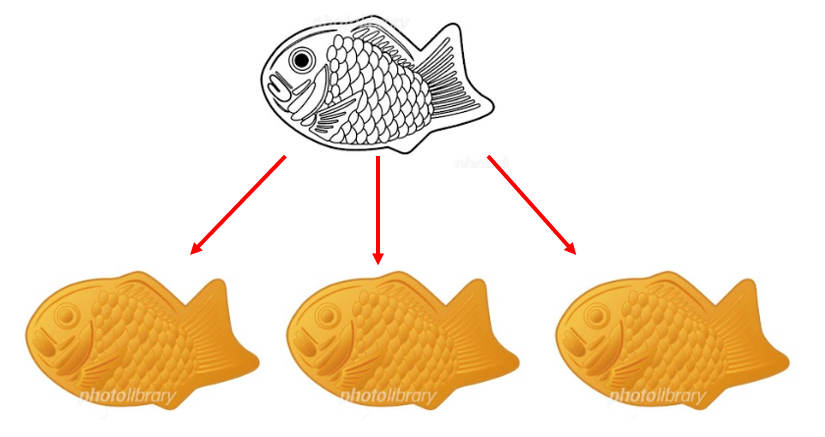はじめに
今回は、組み込み型とオブジェクトに関して解説します。
YouTube動画
WindowsによるPython入門 (第三回) 組み込み型とオブジェクト
リテラルに関して
前回は変数を解説しましたが、変数に対して、直接記述する値の事をリテラルと言います。
例えば、整数の 1 や文字列の "abc" はリテラルです。
それぞれ、整数リテラルや文字列リテラルなどと言います。
組み込み型
予め使用可能な型を組み込み型と言います。
今のところ、整数型と文字列型を見ましたが、主要な組み込み型は以下の通りです。
- bool型 (ブール型)
- int型 (整数型)
- float型 (浮動小数点数型)
- bytearray (バイトアレイ型)
- bytes型 (バイト列型)
- str型 (文字列型)
- tuple型 (タプル型)
- list型 (リスト型)
- dict型 (辞書型)
- set型 (集合型)
- frozenset型 (凍結集合型)
具体例を見てみます。
>>> type(True) # ブール型
<class 'bool'>
>>> type(1) # 整数型
<class 'int'>
>>> type(1.0) # 浮動小数点数型
<class 'float'>
>>> type(bytearray(b"abc")) # バイトアレイ型
<class 'bytearray'>
>>> type(b"abc") # バイト列型
<class 'bytes'>
>>> type("abc") # 文字列型
<class 'str'>
>>> type((1, 2, 3)) # タプル型
<class 'tuple'>
>>> type([1, 2, 3]) # リスト型
<class 'list'>
>>> type({"a":1, "b":2, "c":3}) # 辞書型
<class 'dict'>
>>> type({1, 2, 3}) # 集合型
<class 'set'>
>>> type(frozenset({1, 2, 3})) # 凍結集合型
<class 'frozenset'>
bytearray 型や frozenset 型などリテラルが存在しないものもあります。
その場合、型から値を作ります。
各型の詳細に関しては、次回以降で解説します。
オブジェクトに関して
ここで、「型」に関して再度確認します。
整数リテラル 10 の型を確認すると、「クラス」int と表示されます。
Python では、クラスは型と同じ意味です。
つまり、int 型の値が整数値 10 でしたが、int クラスの値が 10 という事になります。
>>> type(10)
<class 'int'>
クラスというのは型で、型からインスタンス (実体) を作ります。
よくある説明ですが、型は「たい焼きの型」で、インスタンスが「たい焼き」です。
型の種類は色々ありますが、例えば、「たい焼きの型」や「今川焼の型」など型によって作成される実体は異なります。
ここで、変数でも使用した図を再掲します。
インスタンスの中に値を持っています。
また、インスタンスはオブジェクトとも言います。
つまり正確に言えば、変数 a が指すのは「オブジェクト」で、オブジェクトであるクラスのインスタンスが整数値 10 を保持しています。
オブジェクトは「箱」のようなイメージです。
Pythonでは、基本的に変数や予約語以外、全てのものが「オブジェクト」です。
そして、変数はオブジェクトを参照しています。
クラスに関して
クラスの詳細は、後の回で解説しますが、ここでは簡単に説明します。
クラスのインスタンスは、属性として「変数」と「関数 (メソッド)」 を保持しています。
属性というのは、データの事です。
データで呼び出し可能なものがメソッドです。
具体的には、以下のような感じです。
文字列クラスのメソッドを呼び出しています。
>>> a = "abc" # 変数 a は文字列オブジェクトを指す
>>> a.upper() # 文字列の upper() メソッドの呼び出し
'ABC'
>>> a.startswith('a') # 文字列の startswith() メソッドの呼び出し
True
オブジェクトの属性の一覧を確認するのは、dir() 関数を使用します。
>>> dir(a)
['__add__', '__class__', '__contains__', '__delattr__', '__dir__', '__doc__', '__eq__', '__format__', '__ge__', '__getattribute__', '__getitem__', '__getnewargs__', '__getstate__', '__gt__', '__hash__', '__init__', '__init_subclass__', '__iter__', '__le__', '__len__', '__lt__', '__mod__', '__mul__', '__ne__', '__new__', '__reduce__', '__reduce_ex__', '__repr__', '__rmod__', '__rmul__', '__setattr__', '__sizeof__', '__str__', '__subclasshook__', 'capitalize', 'casefold', 'center', 'count', 'encode', 'endswith', 'expandtabs', 'find', 'format', 'format_map', 'index', 'isalnum', 'isalpha', 'isascii', 'isdecimal', 'isdigit', 'isidentifier', 'islower', 'isnumeric', 'isprintable', 'isspace', 'istitle', 'isupper', 'join', 'ljust', 'lower', 'lstrip', 'maketrans', 'partition', 'removeprefix', 'removesuffix', 'replace', 'rfind', 'rindex', 'rjust', 'rpartition', 'rsplit', 'rstrip', 'split', 'splitlines', 'startswith', 'strip', 'swapcase', 'title', 'translate', 'upper', 'zfill']
おわりに
次回は、各型の詳細を解説していきます。

